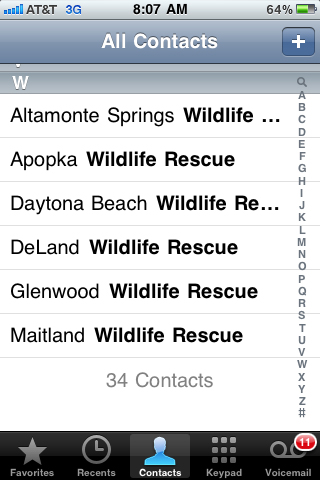This morning, Arthur and I saw what we first thought was an unfortunate roadkill opossum on the road as we drove through our neighborhood. To our shock, we saw the injured animal was still alive, and struggling to cross the road. What to do?
What would you do if you saw a Mute Swan bleeding by the side of busy highway? Who would you call if you saw a Brown Thrasher lying in the middle of a busy city intersection, dazed from a window strike? If a Great Blue Heron was struck by a car in your neighborhood, would you know what to do?
I was involved in these scenarios and more as a volunteer with FCWR. Being familiar with wildlife rehabilitation in the Chicago area, I knew who to call in case of animal emergencies. But I came across plenty of concerned citizens who were frustrated by the time they got in touch with someone who could help them and their distressed animal. Unfortunately, police departments, emergency services and local governments don’t always know the closest rehabilitation centers. If you start calling random government agencies, you might have to play phone tag, while your injured animal is waiting for urgent care.
If you believe that birders are more observant than the average person, you might also believe that birders are more likely to come across situations like the ones listed above. Judging from emails sent to a few state listservs I’ve followed in the past, birders might be in a better position to find and help injured wildlife, but they don’t always know what to do or who to call. So prepare yourself, and write down some numbers or add them to your phone. Think of all your non-birder friends out there too… who are they going to call when they find an injured bird? It might just be you – so you better be ready. The time you save by being prepared may mean life instead of death for an injured animal.
Now that we’ve moved to a new area, one of the first things I did was look up local wildlife rehabbers and note which species or families they help. I’ve added their contact information to my phone and to Arthur’s phone. I’ve made note of the addresses, too, since cellphone reception isn’t the same everywhere. In our case we’ve noted several that are close to the places we’ll frequently visit. We’ve entered them with the “last name” Wildlife, so we don’t have to remember individual center names and they are all easy to find together in our contacts.

Besides noting contact info for local rehabbers, I spent a few moments looking over the websites of my local groups. Rehab centers are almost always underfunded, and understaffed, relying on the hard work of dedicated volunteers. Becoming familiar with how different local groups work may help me and potential wildlife rescues in the future.
And it helped us help the opossum this morning. We turned the car around and Arthur got on the phone with our closest mammal rehabilitation center and prepared the cardboard animal carrier we keep in the car. I put on a pair of gloves and grabbed a blanket to gather up the injured opossum and transfer it to the carrier. (Besides noting the phone numbers, we take the extra step of keeping a few pieces of equipment in the back of our minivan to recover injured birds or animals.)
Here are some wildlife rehabilitation directory sources. They might not have the most updated information on every listing, so it’s a good idea to be sure the organizations you find are still in operation. Often a simple Google search will give you an idea of the rehabber’s status.
The Wildlife Rehabilitation Information Directory
National Wildlife Rehabilitators Association
Wildlife Rehabber search
More sources of interest:
My Dog Found a Nest of Baby Bunnies decision tree
I Found a Baby Squirrel on the Ground decision tree
How to Rescue a Sick, Injured or Baby Raptor



